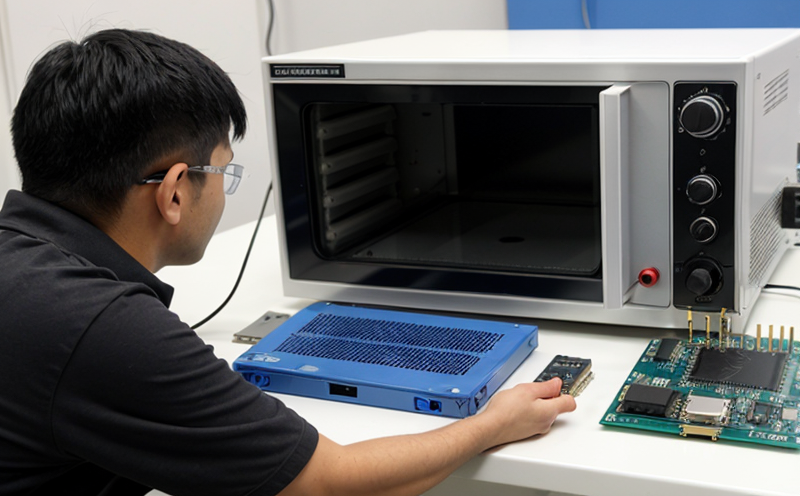JEDEC JESD22 B102 Solderability Testing for Microelectronics
The JEDEC JESD22 B102 solderability test is a critical procedure used to evaluate the ability of surface-mounted electronic components, particularly microelectronic devices, to be soldered. This test ensures that the materials and processes used in manufacturing are suitable for reliable assembly. The standard requires the testing of various aspects including tin/lead (Sn/Pb) solder joints, lead-free (solder) alloys, and other relevant material combinations.
The procedure involves exposing the component leads or pads to a molten solder bath under controlled conditions. The goal is to assess how well the metal surfaces form solder joints with the solder alloy. This test helps manufacturers ensure that their products will perform reliably in real-world environments by identifying potential weaknesses in the assembly process before they become costly issues.
The JESD22 B102 standard specifies detailed procedures for conducting this test, including specimen preparation and testing parameters. These include:
- Temperature control of the solder bath
- Dwell time in the molten solder
- Immersion depth of the components
- Number of immersion cycles required for thorough testing
The test results are analyzed based on visual criteria such as the appearance and integrity of the solder joints. The presence or absence of voids, cracks, or other defects can indicate problems with the surface finish or the solderability of the component.
Understanding these details is crucial for quality managers, compliance officers, R&D engineers, and procurement teams involved in ensuring that electronic components meet stringent industry standards. Proper implementation of this test can significantly enhance product reliability and reduce costly failures during manufacturing and operation.
Benefits
The primary benefit of adhering to the JEDEC JESD22 B102 standard lies in its ability to ensure consistent quality across all stages of production. By testing solderability early in the process, potential issues can be identified and addressed before mass production begins.
Conducting this test also enhances product reliability by ensuring that components are compatible with various solder types used in modern electronics manufacturing processes. This compatibility is especially important given the trend towards lead-free solder technology.
The test contributes to compliance with international standards, such as ISO 9658:2014, which specifies requirements for tin-lead and lead-free solderability testing of electronic components. By aligning with these guidelines, companies can ensure their products meet global regulatory requirements and maintain competitive advantage in the marketplace.
Furthermore, the results from this test provide valuable data that can inform process improvements and innovation within R&D teams. This information helps engineers refine manufacturing techniques to achieve optimal performance while maintaining cost-effectiveness.
Industry Applications
| Application Area | Description |
|---|---|
| Data Centers | Ensures reliability of server motherboards and components. |
| Aerospace & Defense | Meets stringent environmental requirements for space and military applications. |
| Automotive Electronics | Guarantees compatibility with lead-free solder in vehicles. |
| Consumer Electronics | Improves the quality of products like smartphones, televisions, and gaming consoles. |
| Telecommunications | Safeguards network infrastructure reliability and longevity. |
The JEDEC JESD22 B102 standard is particularly important for industries where product reliability and durability are paramount. By ensuring that all components meet the stringent requirements set forth in this test, manufacturers can build trust with customers who rely on their products for critical functions.
Use Cases and Application Examples
In data centers, ensuring that server motherboards and other components are solderable according to the JESD22 B102 standard is essential for maintaining high levels of uptime and performance. In aerospace and defense applications, this test ensures that space-grade electronics can withstand harsh environmental conditions while remaining reliable.
The automotive industry benefits from lead-free solder technology compliance, which helps in reducing environmental impact without compromising product quality. Consumer electronics manufacturers use this testing to enhance the durability and reliability of their products, leading to improved customer satisfaction.
In telecommunications infrastructure, ensuring that network components are solderable according to these standards guarantees robust performance under various operational conditions. These examples illustrate how the JESD22 B102 standard plays a vital role across multiple sectors by promoting consistent quality in electronic component manufacturing.





